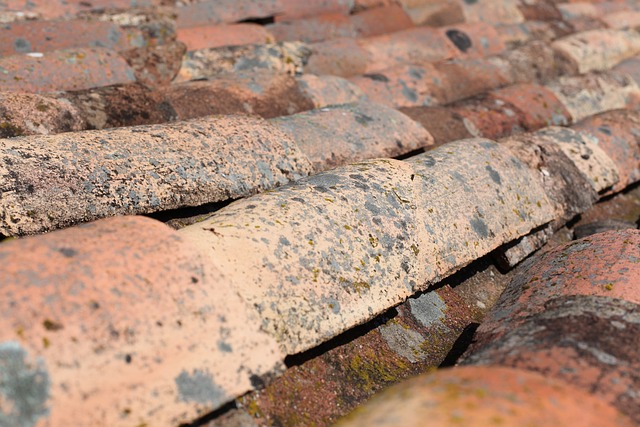This text provides an extensive guide to roof waterproofing for both commercial and residential properties, emphasizing the significance of professional installation. It explores various waterproof coatings and systems tailored to different roofing needs, with a focus on protecting flat roofs from water intrusion. The key highlights include assessing roof types (pitched vs. flat) and their unique challenges, considering local climates, and selecting durable solutions like advanced coatings for enhanced protection. By addressing these factors, homeowners and businesses can prevent costly repairs, ensure safety, and achieve long-lasting roof integrity through effective waterproofing systems.
“Unsure about the best waterproofing system for your roof? This comprehensive guide is designed to empower both homeowners and commercial property managers. By delving into the intricacies of roof waterproofing, we offer a detailed roadmap. First, we’ll explore how understanding your unique roof needs—from pitched to flat roofs—is crucial. Then, we present various systems, including membrane, coating, and barrier options, highlighting their benefits for specific challenges like leaks, corrosion, and structural damage.
The heart of this article emphasizes the invaluable role of expert consultation in selecting the ideal system. We’ll break down commercial vs. residential waterproofing approaches, offering insights into specialized considerations. Furthermore, we provide a step-by-step implementation guide, ensuring readers are equipped to collaborate with professionals for long-lasting protection against roof leaks.”
# Blog Post Outline: Expert Consultation for Choosing the Ideal Waterproofing System
1. Understanding Your Roof's Unique Needs
Before diving into the world of roof waterproofing systems, it’s essential to understand that every roof has unique needs. Factors such as climate, roofing material, and structural design play a pivotal role in determining the most suitable waterproofing solution. For example, a commercial flat roof in a region with frequent heavy rainfall will require different measures than a residential pitched roof in a milder climate. Professional roof waterproofing experts are crucial here; they assess these variables to suggest the best fit from options like waterproof roof coatings or advanced leak prevention systems.
Roof leaks can cause significant damage, leading to costly repairs and potential safety hazards. Therefore, investing in the right waterproofing system is not just about protecting your investment but also ensuring peace of mind. Waterproof roofing solutions range from traditional methods like tar and gravel to modern innovations like reflective coatings that offer superior protection against water intrusion. A professional’s guidance ensures you choose a system tailored to your roof’s specific needs, providing long-lasting durability and reliability.
– Assessing the type of roof (residential vs. commercial, pitched vs. flat) and its specific challenges.
When considering roof waterproofing systems, assessing the roof type is a crucial first step. Residential and commercial roofs, whether pitched or flat, each present unique challenges that influence the choice of waterproofing solution. For instance, pitched roofs often require systems that can handle steep slopes and potential debris buildup, whereas flat roofs demand products designed for long-term water resistance on stable surfaces.
Waterproof roof coatings and leak prevention systems are particularly tailored to address these disparities. Commercial roof waterproofing, for example, focuses on durability and strength due to the larger span and heavy loads typically found in commercial structures. In contrast, residential roof waterproofing emphasizes ease of installation and cost-effectiveness, aligning with the more diverse and often smaller scales of residential applications. Effective waterproofing flat roofs requires special attention to sealants and coatings that can withstand prolonged water pressure without failure.
– Identifying local climate conditions and their impact on roofing.
When choosing a roofing system, understanding your local climate conditions is paramount. Different regions present unique challenges that can affect the performance and longevity of your roof. For example, areas prone to heavy rainfall require robust roof waterproofing systems and leak prevention measures to safeguard against frequent water intrusion. In contrast, regions with extreme temperatures necessitate materials that can withstand both heat-related stress and rapid temperature changes without compromising integrity.
Professional roofers often recommend tailored solutions like waterproof roof coatings for added protection or specialized flat roof waterproofing solutions for residential and commercial properties alike. These expert consultations consider not just the current climate but also future weather patterns, ensuring long-lasting results. By addressing local conditions upfront, homeowners and business owners can prevent costly repairs down the line and maintain a secure, dry environment below their roofs.
– Discussing common issues like leaks, corrosion, and structural damage to guide system selection.
When considering roof waterproofing systems, it’s crucial to address potential issues like leaks, corrosion, and structural damage. These problems can arise from various factors, including poor installation, aging materials, or harsh weather conditions. Commercial and residential roof waterproofing solutions differ in their approach, with flat roofs often requiring specialized treatments due to their unique challenges.
Professional roof waterproofing services play a vital role in mitigating these issues. Waterproof roof coatings are an effective barrier against moisture intrusion, preventing leaks and prolonging the lifespan of both commercial and residential rooftops. By understanding the specific needs of your property—be it a flat roof or a more traditional sloped design—you can select the ideal waterproofing system from available options, ensuring long-term protection against corrosion and structural damage.
